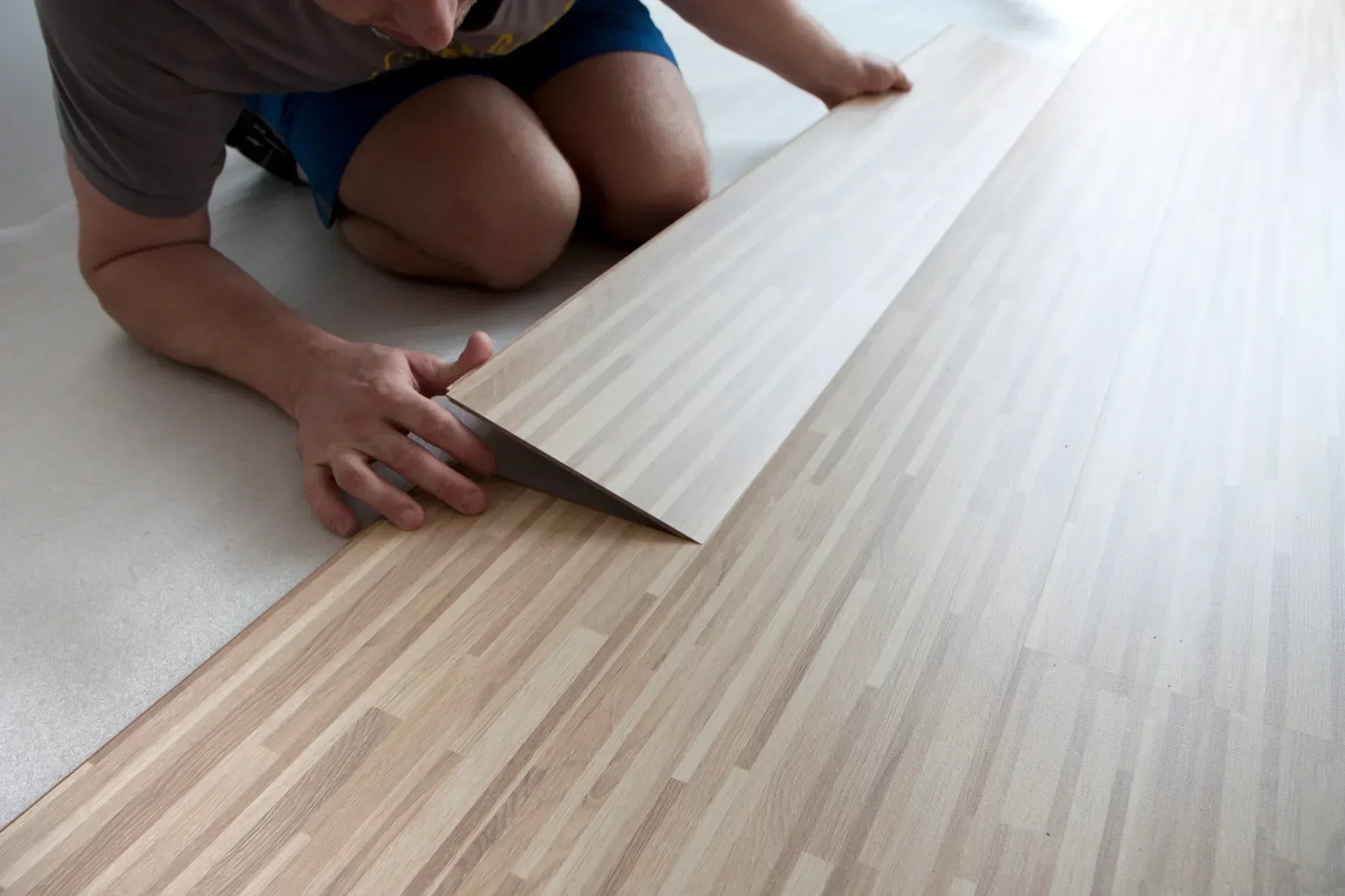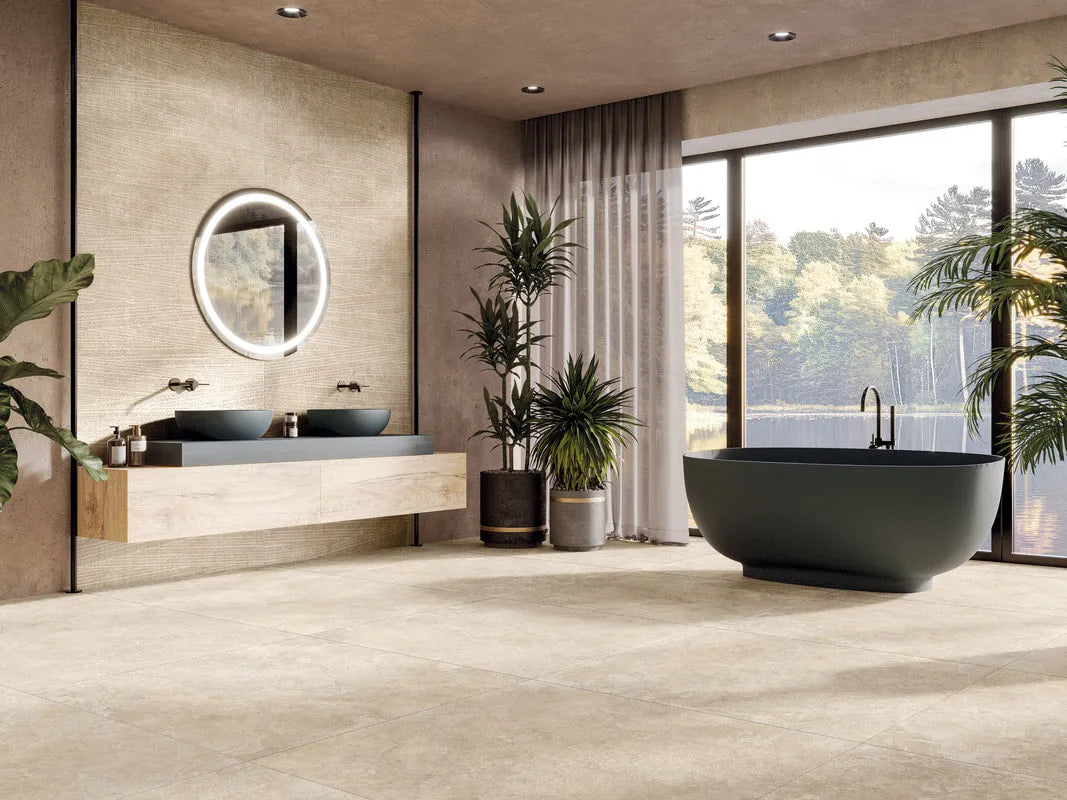Choosing flooring compatible with a radiant heating system—whether hydronic or electric—requires careful consideration. Among the many options available, the combination of engineered wood and heated floors is attracting increasing interest. But is this combination truly viable? Is it a good choice for combining thermal comfort, performance, and aesthetics?
In this article, we answer these essential questions. You'll discover when engineered wood is compatible with underfloor heating, the precautions to take during installation, and how it compares to other materials like vinyl, ceramic, or solid wood. The goal: to help you make an informed and sustainable choice, without compromise.

Summary
- What is engineered wood and why it is often recommended with heated floors
- Engineered wood and heated flooring glued, floating or nailed: which installation should you choose?
- What types of engineered wood are compatible with radiant heating?
- Engineered wood or other materials? The right choice for underfloor heating
- Installation tips for engineered wood over heated floors
- Conclusion
- Frequently Asked Questions About Engineered Wood and Heated Floors
What is engineered wood and why it is often recommended with heated floors
Engineered wood is a type of flooring made from multiple layers of wood glued together. The visible surface is a thin layer of hardwood (such as oak or maple), while the underlying layers are made of plywood or cross-oriented wood fibers. This process significantly increases the material's stability, especially in the face of temperature and humidity fluctuations.
Why engineered wood responds better to heat than solid wood
This stability is precisely what makes engineered wood attractive for radiant heating systems. Unlike solid wood, which tends to expand or contract unpredictably, engineered wood withstands heating and cooling cycles better. This is why many manufacturers recommend it as a floor covering compatible with heated floors, provided certain installation conditions are met.
Not all engineered woods are compatible with underfloor heating.
However, it's important to understand that not all engineered wood is automatically compatible with radiant heating. Some products are too thick, poorly constructed, or use heat-sensitive adhesives. To avoid any problems, always check the manufacturer's specifications. Engineered flooring must clearly state its compatibility with heating systems, otherwise warranties may be voided.
Engineered wood and heated flooring glued, floating or nailed: which installation should you choose?
The installation method has a direct impact on the thermal performance and durability of a heated floor. While several installation methods are possible for engineered wood (glued, floating, nailed), not all are recommended for radiant heating. Choosing the wrong method could impair heat transfer, create air spaces, or cause stress in the wood.
Which installation method ensures the best thermal efficiency?
Glued installation directly onto a screed or slab is generally considered the most efficient method for heated floors. It ensures direct contact between the wood and the heat source, which optimizes thermal conductivity. It is also the preferred method for most manufacturers to prevent floor movement due to temperature fluctuations.
Why floating and nailed installation pose problems with underfloor heating
Unlike glue-down installation, floating installation creates an air gap between the floor and the heating base, which reduces the system's efficiency. It can also amplify footstep noise and accentuate wood movement, especially if the underlayment is too thick or insulating. Nail-down installation is rarely compatible with radiant heating, since it requires a wood subfloor that blocks some of the heat and complicates room temperature regulation.
What types of engineered wood are compatible with radiant heating?
Not all engineered floors react the same way to heat. Several factors influence their performance when combined with a radiant heating system: the wood species, the floor structure, the thickness of the layers, the adhesive used, and even the type of finish.
What technical criteria ensure compatibility between engineered wood and heated floors?
For engineered wood to be truly compatible with underfloor heating, it must meet several criteria. The total thickness should not exceed approximately 15 mm, and the surface layer of hardwood should ideally be between 2 and 4 mm. The core of the flooring must be made of plywood or high-density wood fibers, oriented crosswise to provide maximum stability. Finally, it is crucial that the manufacturer clearly states on the technical data sheet that the product is designed for use with underfloor heating.
Common Mistakes to Avoid When Choosing Compatible Engineered Wood
A common pitfall is choosing engineered flooring based solely on appearance or price, without checking its thermal performance. Some products have too high a thermal resistance, which limits heat transfer. Others don't specify their tolerance to temperature variations, making their behavior unpredictable on a radiant system. An incomplete or vague technical data sheet is a red flag that shouldn't be ignored.
Certain species such as exotic woods, hickory ( carya ) or cherry, which are more sensitive to humidity variations, should be avoided in a radiant heating context. It is better to choose a more stable wood such as white oak, ash or maple.
Engineered wood or other materials? The right choice for underfloor heating
Choosing the right floor covering for underfloor heating isn't just about technical compatibility. Thermal comfort, aesthetics, durability, and the material's long-term response to heat must also be considered. To make an informed choice, it's important to compare the performance of the main options.
Vinyl (SPC or LVT)
Rigid vinyl is thin and conductive, making it a good choice for heated floors. It heats up quickly, resists moisture, and is easy to install. It offers decent comfort, although it's colder and firmer underfoot than wood. It's recommended to choose vinyl certified for radiant systems to limit VOC emissions.
Ceramic
Ceramic is one of the best heat conductors for underfloor heating. It heats up quickly, retains heat well, and doesn't warp. Ideal for kitchens and bathrooms, it is, however, colder and harder underfoot. This rigid feel can be a disadvantage for long-term comfort.
Linoleum
Linoleum is compatible with underfloor heating if the system heats up gradually and remains well regulated. It provides gentle warmth underfoot and a certain elasticity. More fragile than other materials, it can warp if improperly installed or exposed to significant fluctuations. A heat-resistant adhesive is essential.
Solid wood
Solid wood is rarely recommended for underfloor heating because it reacts strongly to changes in heat and humidity. Even modified models can crack or lift. It is not very stable and requires strict installation and maintenance requirements. Engineered wood is generally a more reliable alternative.
Comparison of materials compatible with underfloor heating
| Material | Thermal conductivity | Barefoot comfort | Heat stability | Interview |
|---|---|---|---|---|
| Engineered wood | Good (glued installation) | Warm | Excellent (if well chosen) | AVERAGE |
| Vinyl (SPC/LVT) | Good | Firmer | Good | Easy |
| Ceramic | Excellent | Cold without heating | Perfect | Very easy |
| Linoleum | Average | Soft and pleasant | Medium to low | Easy |
| Solid wood | Medium to low | Warm but unstable | Low (high risk) | Medium to demanding |
Installation tips for engineered wood over heated floors
Maximum temperature, acclimatization and system commissioning
Before installation, the heating system must be turned on gradually over several days to stabilize the slab and evacuate any residual moisture. An acclimatization period for the engineered wood is also essential: the boards must be stored in the room for at least 48 to 72 hours. During use, the floor temperature should never exceed 27°C, including heat peaks, to avoid stress in the wood.
Membranes, adhesives and ambient conditions to be respected
The choice of adhesive is crucial: it must be specifically formulated for heated floors, otherwise it risks degrading under the influence of heat. The use of a decoupling membrane may also be recommended, especially on concrete slabs, to limit tension between the floor and the substrate. The relative humidity in the room must remain between 35% and 55% at all times.
If you're gluing directly onto a concrete slab, a moisture test is often required. Too high a moisture content can compromise adhesion and cause swelling in the wood over time. Many manufacturers require a concrete measurement before allowing installation.
Choosing the right glue for engineered wood on heated floors
Not all adhesives are heat-resistant. You should use a urethane or hybrid adhesive specifically designed for heated floors. This type of adhesive remains flexible, tolerates temperature fluctuations, and does not release harmful compounds. Avoid water-based or quick-setting adhesives. Following the manufacturer's recommendations is essential, as improper adhesive can void your warranty.
Conclusion

Yes, engineered wood can be compatible with underfloor heating, but only if certain conditions are met. You must choose a product designed for this use, check the thickness and structure, use a heat-resistant adhesive, and follow an approved installation method. Compared to other materials, it offers an excellent balance between comfort, thermal performance, and aesthetics.
If you're considering underfloor heating, the Emard Couvre-Planchers team can guide you toward the right product, based on your system, rooms, and budget. Visit our showroom or request a quote to confirm your project's compatibility with engineered wood.
Frequently Asked Questions About Engineered Wood and Heated Floors
Can engineered wood be installed over water or electric underfloor heating?
Yes, provided that the product is compatible and the installation complies with the rules: glued installation, suitable glue, maximum temperature of 27°C, and stable humidity level.
What type of engineered wood is most recommended for underfloor heating?
The most suitable are multi-layer models with a 2-4 mm layer of hardwood, a cross-laminated plywood core and a total thickness of less than 15 mm.
What glue should I use with engineered wood on radiant heating?
A urethane or hybrid adhesive formulated for heated floors is strongly recommended. Avoid water-based or heat-sensitive adhesives.
Can floating installation be used with underfloor heating?
Technically yes, but it's not recommended. It reduces heat transfer and increases the risk of movement or noise. Glued installation remains the most reliable.





